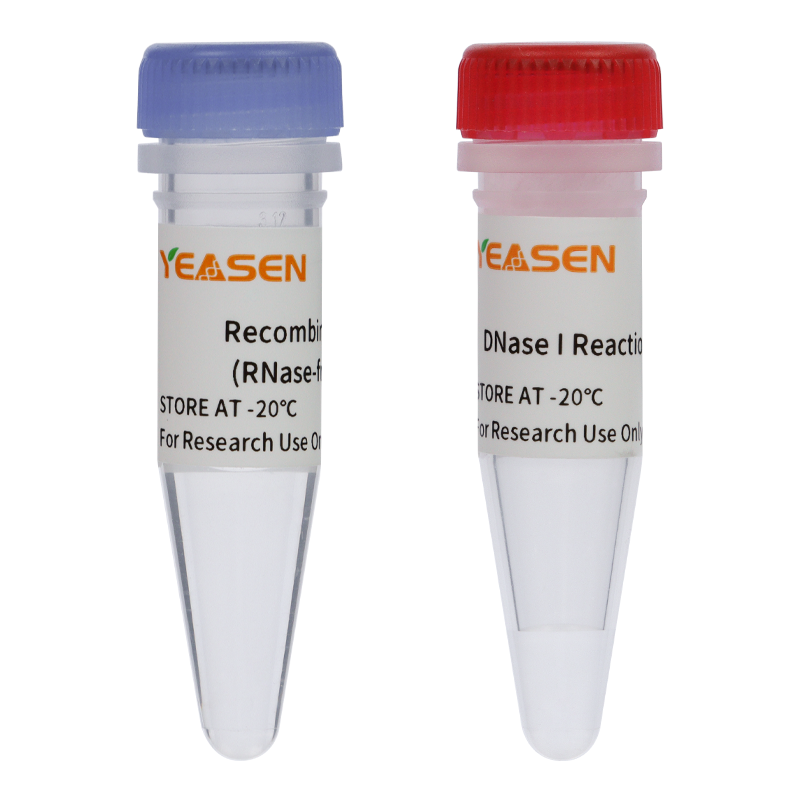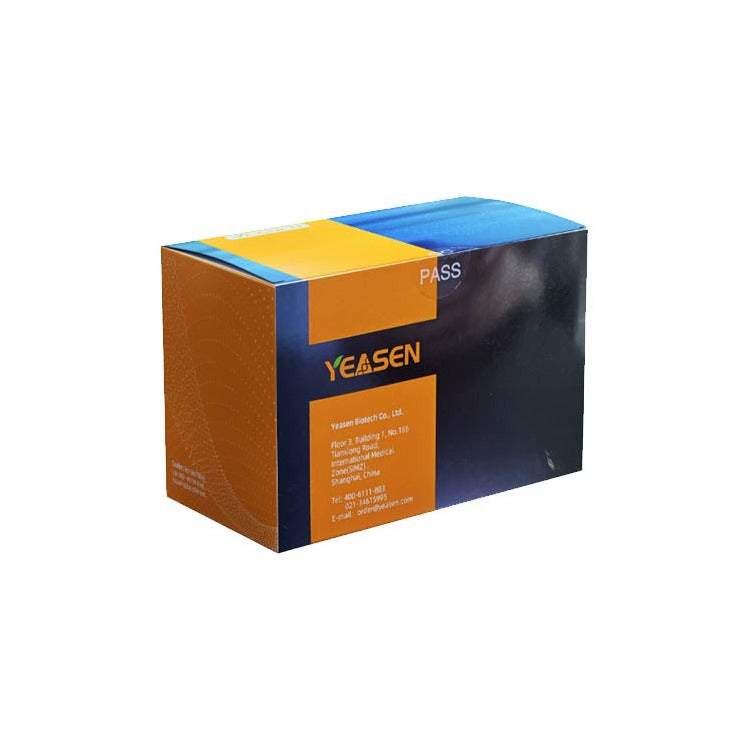Description
DNase I is an endonuclease that can digest single- or double-stranded DNA. It can hydrolyze phosphodiester bonds to produce mono- and oligodeoxynucleotides containing a 5'-phosphate group and a 3'-OH group.The optimal working pH range of DNase I is 7-8. The activity of DNase I depends on Ca2+ and can be activated by divalent metal ions such as Co2+, Mn2+, Zn2+, etc. In the presence of Mg2+, DNase I can randomly cleave any site of double-stranded DNA; while in the presence of Mn2+, DNase I can cleave DNA double-stranded at the same site, forming blunt ends or sticky ends with 1-2 nucleotides protruding. It can be used for the processing of various RNA samples.
Features
Recombinant source.
RNase-free.
High enzymatic cleavage efficiency.
More suitable for applications sensitive to RNase.
Applications
Removal of gDNA before RNA extraction or reverse transcription.
Removal of template DNA in in vitro transcription.
rRNA removal in RNA library construction and sequencing.
Nick translation for DNA labeling.
DNase I footprinting assay experiment.
Specifications
|
Expression Host |
Recombinant E. coli with Dnase I gene |
|
Unit Definition |
The amount of enzyme required to increase the absorbance at 260 nm of the reaction solution by 0.001in1minute at 25℃ and pH 5.0 using calf thymus DNA as the substrate is defined as one activity unit(Kunitz Unit) |
Components
|
Components No. |
Name |
10325ES80 |
10325ES90 |
|
10325-A |
Recombinant DNase I (RNase-free) -2 U/μL |
500 μL |
5×500 μL |
|
10325-B |
DNase I Reaction Buffer (10×) |
1 mL |
5×1 mL |
Shipping and Storage
This product should be stored at -25 ~ -15oC for 2 years.
Figures

Figure 1.In vitro transcription - Template DNA removal: C: No DNase I control; T: Imported brand T; N: Imported brand N; M: Marker.
Documents:
Safety Data Sheet
Manuals
Payment & Security
Your payment information is processed securely. We do not store credit card details nor have access to your credit card information.
Inquiry
You may also like
FAQ
The product is for research purposes only and is not intended for therapeutic or diagnostic use in humans or animals. Products and content are protected by patents, trademarks, and copyrights owned by Yeasen Biotechnology. Trademark symbols indicate the country of origin, not necessarily registration in all regions.
Certain applications may require additional third-party intellectual property rights.
Yeasen is dedicated to ethical science, believing our research should address critical questions while ensuring safety and ethical standards.


